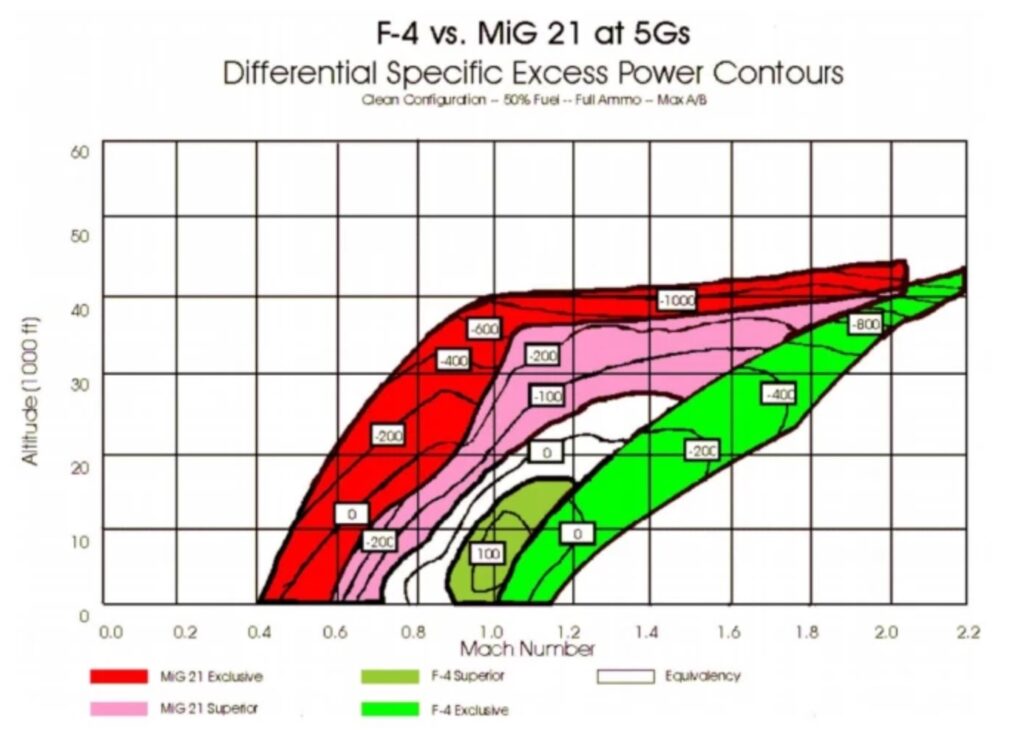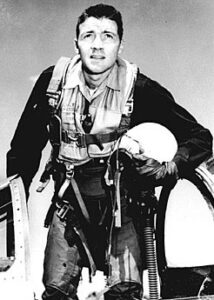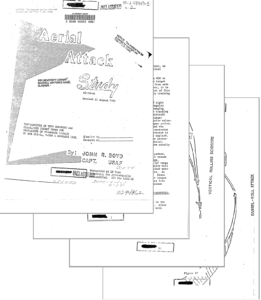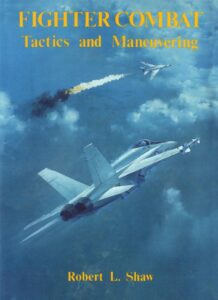Purpose
Many people knowledgeable in air combat will insist that it’s the pilot and not the plane that determines the outcome. And the pilot is of course central, and like any good carpenter will not blame his saw, the definition of a good artisan is that they will produce a good result even given a mediocre tool. However, this observation does not change the fact that when two pilots of equal skill do battle, the one in the better performing machine will undoubtedly hold an advantage. In addition, even for a hot shot pilot, aircraft performance is important in the sense that you need to know your airplane’s strength and what are the weaknesses of your opponent. A basic distinction here is between what is termed an “energy” and an “angles” fighter. The former is more suited to so-called boom and zoom attacks in the vertical plane, while the latter is usually more restricted in this regard but dominates in the horizontal plane with tight turns.
Many books have been written on the subject of tactics, and the subject is far too big and complex to be covered here. Suffices to say that the boundary between the two types of fighters is not fixed but fluid, and if a particular aircraft is an “angles” or an “energy” fighter depends on the nature of the opposition. A classic example of this is the Spitfire Mk5 versus the Fw-190A3. And in 1941 when these two met over occupied France, there is no question that the former in this setup was the “angles” and the latter the “energy” fighter. In these cases the differences are extreme and a pilot with any sense will know how to handle the situation. However, if the Fw-190A3 pilot instead meets a Russian La-5 fighter, which is which? In this situation, the pilot who has the better understanding of his opponent’s capabilities as compared to his own holds the advantage. So as a pilot, no matter how good a “stick” you are, you still need to know what you are dealing with.
Finally it’s important to note that the above analysis is of course in some sense academic, since it implies a one versus one scenario which is not the situation any air force strives for, and most tacticians will emphasize the importance of numbers and teamwork as the keys to success. However, that does not change the fact that air fighting in many cases breaks down into individual fights, and history is rife with examples of 1v1 combats. It’s in these situations vital for the pilots to have a good understanding of their adversaries capabilities so that they can answer these questions to themselves: In this particular mix up I’m facing right now at this particular altitude, am I flying the “angles” or “energy” fighter? How do I get into a position to dominate this encounter given the strengths of my airplane versus the weaknesses of my opponent’s?
This is why it’s so vital to have a good understanding of an aircraft’s flight performance. Both your own and that of your adversary’s. This in turn is why I wrote the book “WW1 Aircraft Performance” and created this website.

Adolf Galland: The archetypical fighter pilot personified.

A typical example of John Boyd's so-called Energy Maneuverability charts comparing the Specific Excess Power (SEP) concept he introduced.

John Boyd: The man who broke the trend towards ever heavier & more complex fighters.

John Boyd's groundbreaking Aerial Attack Study paper published 1964.
